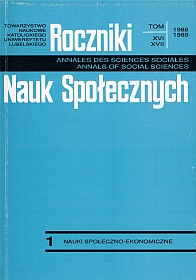The Church Social Care in Wielkopolska Region of the Poznań Diocese During the Post-Tridentine Period
Abstract
Prom the very moment of the introduction of Christianity, the Church’s charitable activity was concerned with the running of the hospitals which it had established. In the period of the 16th and 17th centuries, as well as in the Middle Ages, they functioned primarily as almshouses but not infirmaries. In the first thirty years of the 17th century only one parish in five of the Poznan diocese had its own hospital. Ry the end of the I7ht century, though, there were hospitals in about half of the diocesan parishes. The number of hospitals at work in the last quarter of the 17th century did not essentially change throughout the whole 18th century. Over the period of the 17th end 18th centuries the number of the poor increased from 460 to 640 in all hospitals of the Wielkopolska Region of the Poznań diocese. Basically, the percentage of women among inmates ranged from 65 to 30 per cent. In the hospitals, particular care was taken of the religious life of the people staying there. In keeping with the Church’s teaching more attention was paid to the redemption of a patient’s soul than to his or her treatment. The daily routine of the patients consisted of: regular attendance at mass, prayers for the founder and benefactors of the hospital and frequent reception of the Holy Sacraments. Those who did not comply with the above rules were in danger of being discharged from the hospital. Any poor man who disobeyed the rules governing the life at a hospital or behaved disgracefully was also likely to be discharged. The rules defined in detail the districts and principles of alms-collecting by the poor from a hospital. One of the patients’ main occupations, apart from prayer and church services, was begging.
Copyright (c) 1989 Roczniki Nauk Społecznych

This work is licensed under a Creative Commons Attribution-NonCommercial-NoDerivatives 4.0 International License.


